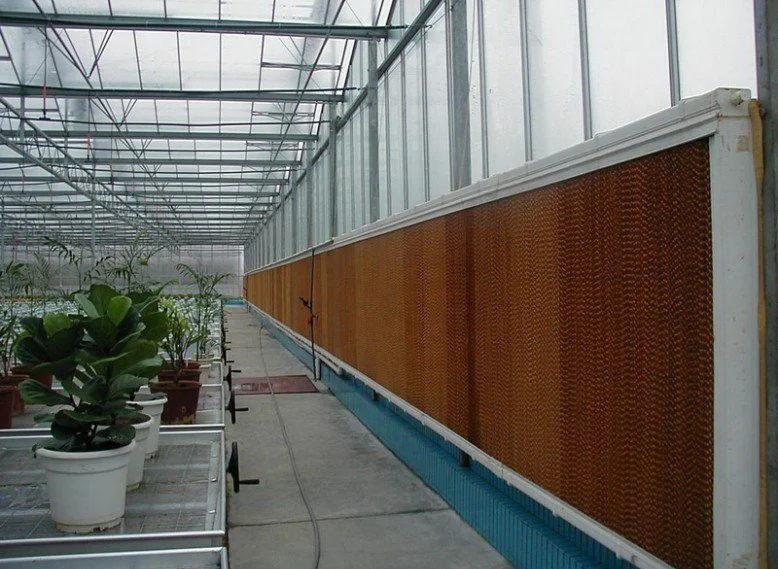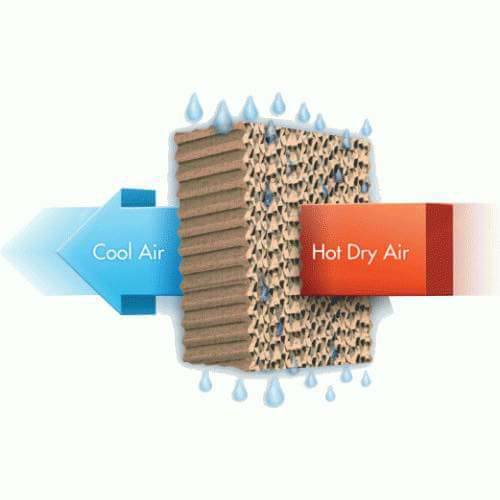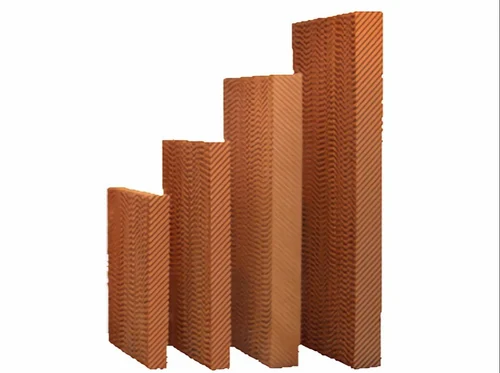| An evaporative cooling pad is a component used in cooling systems, particularly in agricultural and industrial settings, to achieve effective and energy-efficient air cooling. These pads are commonly employed in evaporative cooling systems, also known as swamp coolers or desert coolers.
Key features and functions of evaporative cooling pads include:
- Material: Evaporative cooling pads are typically made from materials with high absorbency, such as cellulose paper or other fibrous materials. These materials are chosen for their ability to hold water and facilitate efficient evaporation.
- Installation: The pads are installed in systems where air is drawn through them. This is often part of a larger system that includes a fan or blower to pull air through the wet pads.
- Evaporative Cooling Process: As warm air is pulled through the wet pads, water evaporates into the air, causing a cooling effect. This is because the energy required for water to change from liquid to vapor is taken from the surrounding air, resulting in a reduction in temperature.
- Humidity Control: While evaporative cooling is effective in dry climates, it may not be as efficient in humid conditions. The process adds moisture to the air, so its effectiveness is influenced by the ambient humidity level.
- Energy Efficiency: Evaporative cooling is considered energy-efficient compared to traditional air conditioning systems, as it relies on the natural process of evaporation to cool the air. It is often used in large spaces, such as greenhouses, poultry farms, factories, and warehouses.
- Cost-Effective Cooling: Evaporative cooling pads provide a cost-effective method for temperature control, making them popular in regions with hot and dry climates.
Overall, evaporative cooling pads play a significant role in providing effective and energy-efficient cooling solutions, particularly in areas where traditional air conditioning may be impractical or cost-prohibitive.
We can provide customized cooling pads to meet your specific requirements |






